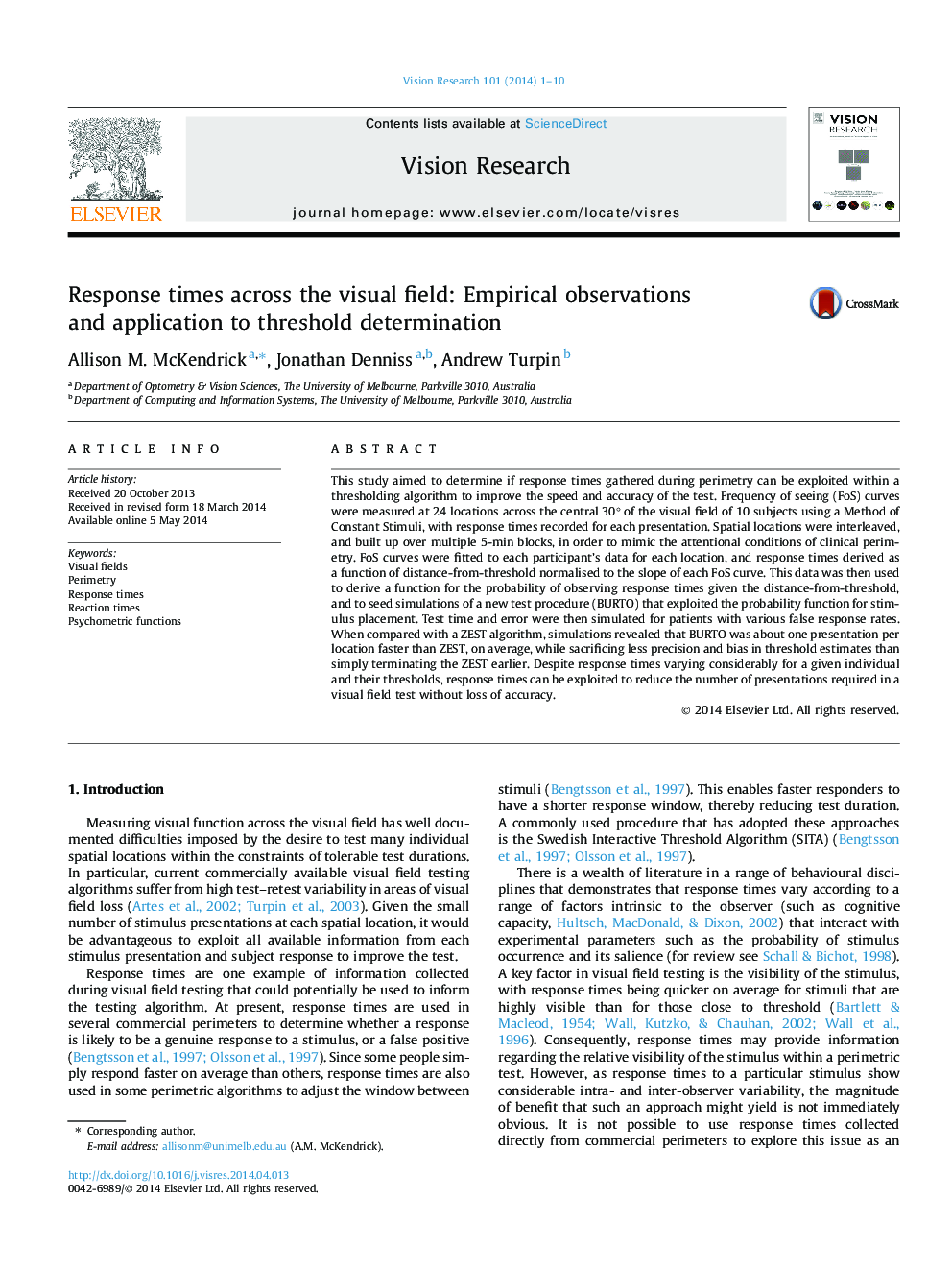| Article ID | Journal | Published Year | Pages | File Type |
|---|---|---|---|---|
| 4033708 | Vision Research | 2014 | 10 Pages |
•Response times and probability of seeing for perimetric stimuli are presented.•We develop a new perimetric algorithm that utilises response time information.•We show via simulation that the new algorithm is faster than current procedures.
This study aimed to determine if response times gathered during perimetry can be exploited within a thresholding algorithm to improve the speed and accuracy of the test. Frequency of seeing (FoS) curves were measured at 24 locations across the central 30° of the visual field of 10 subjects using a Method of Constant Stimuli, with response times recorded for each presentation. Spatial locations were interleaved, and built up over multiple 5-min blocks, in order to mimic the attentional conditions of clinical perimetry. FoS curves were fitted to each participant’s data for each location, and response times derived as a function of distance-from-threshold normalised to the slope of each FoS curve. This data was then used to derive a function for the probability of observing response times given the distance-from-threshold, and to seed simulations of a new test procedure (BURTO) that exploited the probability function for stimulus placement. Test time and error were then simulated for patients with various false response rates. When compared with a ZEST algorithm, simulations revealed that BURTO was about one presentation per location faster than ZEST, on average, while sacrificing less precision and bias in threshold estimates than simply terminating the ZEST earlier. Despite response times varying considerably for a given individual and their thresholds, response times can be exploited to reduce the number of presentations required in a visual field test without loss of accuracy.
